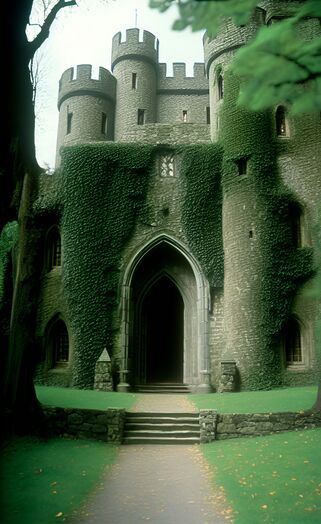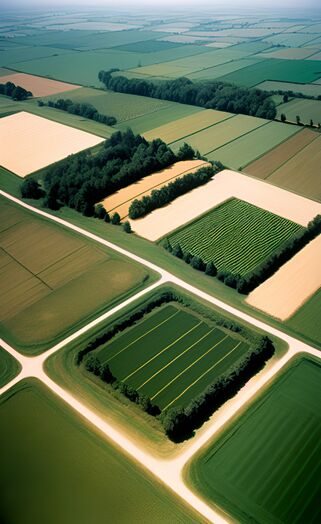Faycrest
Faycrest | |
|---|---|
 | |
| Capital | Oxwood |
| Largest city | Trademire |
| Official languages | Lotharic, Faycrest Common Dialect |
| Recognised regional languages | Jorunite |
| Government | Feudal Autocracy |
• King | Roberd Faywell |
| Area | |
• Total | 21,200 km2 (8,200 sq mi) |
| Population | |
• Estimate | 294,000 |
| Currency | Faycrest Shilling |
Faycrest is a small petty kingdom on the western side of the Thorn River, bordering Jorunland and Lotharia. To the north, Faycrest borders the Kingdom of Nirvel. The Kingdom of Faycrest controls around 8,200 square miles of land and hosts a population of around 294,000, most of which are situated around the three most populous cities, Trademire, Oxwood, and Lost Post. Faycrest is considered a feudal autocracy, ruled by King Roberd Faywell from his personal castle in Oxwood. Most of the land of Faycrest is temperate deciduous forest, separated by land cleared for agriculture. Most of the population are agricultural peasants, with a smaller percentage of fishermen and hunters. Faycrest trades with the Kingdom of Jorunland and enjoys relatively good relations with them. The cities of Lost Post and Trademire are important trade stops along the Bay of Tears Trade Route. Lost Post was the original trade city of Faycrest, and was previously known as Grand Post. When Lotharia constructed Trademire, shipping activity out of Grand Post declined sharply, and the city eventually became known as Lost Post. Faycrest used to be part of the Viceroyalty of the Westerlands, a constituent territory of Lotharia, but due to its decay and stagnation, Faycrest eventually became independent.
Name and History
The name Faycrest when translated literally means “fabled crest” or “fabled sigil”. The name originated from a folk-tale about a legendary kingdom that used to exist in the area that is now Faycrest, but faded from existence after the loss of its great seal of the realm. According to the story, many men tried to find the seal and restore the kingdom, but all failed. Before the foundation of the kingdom, the region was known as the “land of the fabled crest” and eventually simplified into Faycrest.
Economy
Similar to the rest of the known world, the primary economic and land usage system is villeinage, which has developed from Lotharic manorialism. Under this practice, as part of the contract with their landlord, villeins (peasants) are expected to pay dues and services in exchange for land. They are bound to serve their lords and only have one or two acres of land to use. Villeins are tied to the land and can not move away without their lord's consent. Some villeins have clearly defined and limited responsibilities to their lords, while others are essentially at their lords' whim. If an unfree villein allows his daughter into a marriage with a man from another manor, a fine must be paid to the lord as a fee for the lost of future villeins that could have been borne by the woman.
Villeins typically have to pay special taxes and fines that freemen are exempt from. Villeins are generally able to have their own property, unlike slaves. Villeinage is not always an involuntary arrangement. Families enter villeinage voluntarily to guarantee land tenure. And while villeins are heavily restricted in what they could do, it is also possible for them to gain manumission. Many villeins are in villeinage because of the land they hold, rather than by birth. They could become free men if their lord agreed with them to move them to a different holding. Villeinage is not a purely exploitative relationship. Land guarantees sustenance and survival; being a villein guarantees access to land. Landlords rarely evict villeins, because of the value of their labour. Villeinage is much preferable to being a landless labourer.
Culture
Culture in Faycrest is a mixture of four primary sources, Nirvelic culture in the north-west, hill-people culture in the north east, Lotharic culture in the south, and Jorunite culture in the east. Since the realm used to be a constituent territory of the Kingdom of Lotharia, many Lotharic cultural traditions have remained even after the disapperance of Lotharic administration. The northern most regions of Faycrest are predominantly Nirvelic in culture and heritage, while areas along the Thorn River have adopted a lot of Jorunite traditions. In the south, Trademire continutes to be a stronghold of Lotharic language, culture and religion. In the middle regions, including Oxwood, all these cultures have blended together, often causing some disagreements and conflicts. King Roberd claims to be of Lotharic decent, but mostly practices Jorunite cultural traditions, and is a follower of the Jorunite Cult of Uton.
Religion
The most common practiced faith of Faycrest is the Faith of the Two Suns, originating from Lotharia. However, regional religions have began to gain popularity as Lotharic influence loses its luster. A significant portion of people living in eastern Faycrest near the border with Jorunland follow the Cult of Uton, a Jorunite religion. In the south around Trademire, the Faith of the Two Suns remains dominant. Citizens in northern Faycrest are mostly adherents to the Nirvelic religion, a faith centered around the worship of unnamed stone gods. Their idols can be found in small temples across northern Faycrest. While the Faith of the Two Suns remains primarily pacifist an non-proselytizing, the Nirvelic faith and Cult of Uton aggressively proselytize, which has diminished much of the once domiant adherents to the Two Suns. King Roberd himself is a follower of the Cult of Uton, but does not enforce it as a state religion.



